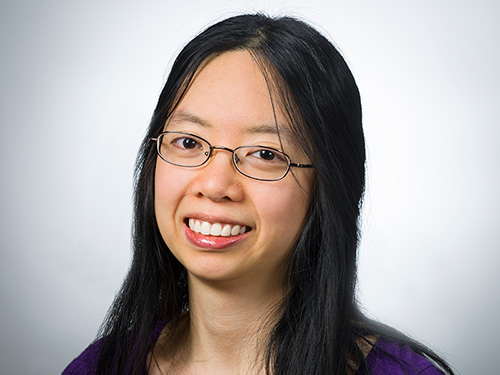Featured Customer: Stacey Louie, Ph.D.

Humankind’s adverse impact on the natural world is of ever-growing concern. Our featured customer Dr. Stacey Louie combines her engineering background with environmental awareness to study risk assessments of nanotechnology products.
Dr. Louie, please tell us about your scientific journey.
I am an assistant professor in Civil & Environmental Engineering at the University of Houston (UH). I received my B.S. in Chemical Engineering at the University of Texas – Austin, and my M.S. and Ph.D. in Civil & Environmental Engineering at Carnegie Mellon University in Pittsburgh. I then completed a postdoctoral fellowship at the National Institute of Standards and Technology (NIST) in Gaithersburg, MD before returning to my hometown of Houston to join the faculty at UH.
I have always had a passion for environmental engineering, both in understanding natural processes and identifying how engineered materials and systems can impact natural environments. This interest led me to investigate the environmental fate and transport behavior of nanoparticles during my Ph.D. This research was intriguing to me as a proactive step in trying to anticipate the environmental behavior of these relatively new nanomaterials before their widespread use. In my postdoctoral research, I further focused on investigating how polymeric coatings commonly used to stabilize nanoparticles can transform and degrade over time to change the behavior of the nanoparticles.
Where do your current research interests lie?
At UH, my research group is currently studying the applications of photocatalytic metal oxide nanomaterials for water treatment to remove or degrade environmental pollutants, as well as expanding to new projects on the potential applications of biodegradable polymeric nanoparticles as sustainable technologies for delivery of active ingredients in environmental and agricultural applications. My group specifically focuses on understanding and predicting the role of bio- or geo-macromolecules in complex environmental or biological media that can interact with the nanoparticles and strongly modify their effectiveness for the desired application.
How have your Wyatt instruments helped address your scientific challenges?
Wyatt instruments have consistently provided essential characterization data to support all of my prior and current research projects. In particular, I am using the Eclipse™ asymmetric flow field – flow fractionation (AF4) module along with the DAWN® multi-angle light scattering (MALS), WyattQELS™ quasi-elastic light scattering (QELS), and Optilab® refractive index (RI) detectors to characterize nanoparticles, macromolecules, and their interactions.
Coupling the MALS and RI detectors with size exclusion chromatography and other spectrophotometric detectors has allowed us to not only obtain the size and molar mass of macromolecules such as proteins and humic substances, but also identify their complexation interactions in mixtures. This information was critical to explain their adsorption behavior onto metal and metal oxide nanoparticles and their effects on the colloidal stability of the nanoparticles.
The Wyatt FFF and QELS instruments further give us high quality information on particle size distributions, such that we are able to identify loss or collapse of <10 nm thick polymer coatings directly on the nanoparticles. We are now pushing the instruments to characterize nanoparticle interactions in increasingly complex biological media. Altogether, I anticipate that the breadth and depth information provided by the Wyatt instruments on nanoparticle transformations, from adsorption and release of compounds to degradation of the particle itself, will enable us to elucidate the mechanisms for their activity.
Nanoparticle interactions aside – have your interactions with Wyatt met expectations?
As a Wyatt instrument user from my doctoral studies through my first years as an assistant professor, I have a great appreciation for the wonderful customer support that Wyatt has always provided. The Light Scattering University in Santa Barbara provides very thorough training on the theory, operation, maintenance, and data analysis on the instruments that was invaluable to me as a new user and now to my own students. All of the Wyatt support staff are highly knowledgeable and were very generous with their time in guiding my students through hands-on training during the installation of our instruments, as well as providing ongoing support to address any questions we have.
This exceptional customer care helped my lab to quickly become productive with the instruments. I am looking forward to the continued use of the Wyatt instruments to generate exciting new data for my current projects and future research to come.

“Wyatt instruments are essential for my research group to characterize the interactions and transformations of macromolecules and nanoparticles in complex environmental media.”
